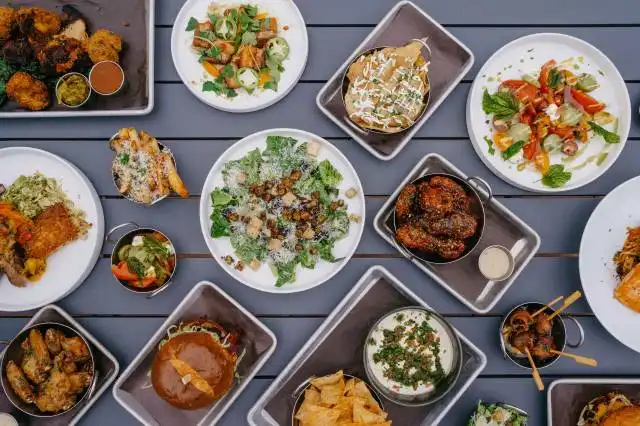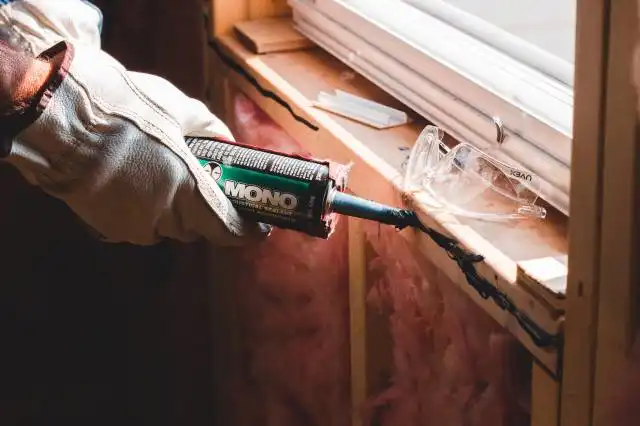Start a Pub
Crafting a Cozy Corner: The Art of Building a Community Pub
| Updated


PUB
Delving into the Pub business is like stepping into a lively scene where the frothy pints of camaraderie flow willfully. As an entrepreneur, your role is crafting this enchanting hub where conversations thrive, long days end, and sports fans unite - all hailed by the shared love for a good brew. Essentially, a pub is a business that sells alcoholic beverages, particularly beer, alongside food to patrons usually within a cozy and friendly atmosphere. Keep in mind, though: the secret to success in this arena is creating more than a pub - it's about breathing life into a community's living room.
Jump to Business Plan
RELATED BUSINESS IDEAS
Browse ALL Food & Beverage Entrepreneurship Business Ideas
Discover Your Perfect Domain
Unlock the door to your online success with our hand-picked selection of premium domain names. Whether you're starting a new venture or rebranding an existing one, the right domain can set the tone for your digital presence. Browse through our curated list, each with its unique potential to enhance your brand's visibility and credibility.
PUB MINI BUSINESS PLAN
This a quick reality check to help you identify the strengths and weaknesses of your business concept before you dive in.
Business Idea: Running a Pub
Expected Percent Margin:
- Gross Margin: 70-75%, considering the mark-up on alcohol
- Net Profit Margin: 10-15%, considering operational and overhead expenses
Earnings Expectations:
- Daily Earnings: $300 - $1,200
- Weekly Earnings: $2,100 - $8,400
- Monthly Earnings: $9,000 - $36,000
- Annual Earnings: $108,000 - $432,000
Actions to Hit Those Numbers:
Licensing and Regulations:
- Liquor License: Obtain necessary licenses; cost varies by location.
- Health Compliance: Ensure food and beverage handling complies with health and safety regulations.
Inventory Management:
- Initial Investment: $10,000-$20,000 for alcohol inventory.
- Supplier Relationships: Maintain good relationships with reliable beverage suppliers.
Marketing and Customer Acquisition:
- Guerilla Marketing: Use low-cost, creative marketing tactics to attract customers.
- Pub Events: Host regular events like trivia, live music or sports viewing parties.
Staff and Customer Experience:
- Staffing: Hire experienced bar staff who can provide great service.
- Menu: Offer a varied menu appealing to a range of tastes, and analyse sales data to adjust it as needed.
Cost Control:
- Lease: Consider a location where lease or rent is less than 10% of projected monthly sales.
- Utilities and Maintenance: Schedule regular maintenance to keep facility costs under control.
Business Operations:
- Operating Hours: Consider opening for long hours, especially during weekends and holidays.
- Transaction Volume: Aim for at least 50-100 transactions per day with an average transaction amount of $20-$30.
Remember, these are estimations and may vary depending on factors like location and competition. Always work with a financial advisor or business consultant for specialized advice.
NOT WHAT YOU HAD IN MIND? Here are more ideas



Browse ALL Food & Beverage Entrepreneurship Business Ideas
Grab Your Business Website Name
Before you get caught up in the whirlwind of setting up your business, invest in a domain name. It's a small but significant step that lays the foundation for your brand and makes it easier for customers to find and trust you. Just like you wouldn't build a house without securing the land first, don't build a business without securing your domain name.
"Why? Can't that wait?" Here's why it shouldn't
Step 1: Determine if Starting a Pub is the Right Business Endeavor
Breakdown of Startup Expenses
Before starting a pub, it is important to understand the startup costs associated with the endeavor. This includes the cost of the building, equipment, licensing, and staff. Additionally, the cost of marketing and advertising should be taken into account. It is also important to consider the cost of any renovations that may be necessary to the building. Finally, it is important to consider the cost of insurance to protect the business.
Breakdown of Ongoing Expenses
In addition to the startup costs, it is important to understand the ongoing expenses associated with running a pub. This includes the cost of supplies, such as food and beverages, as well as the cost of utilities, such as electricity and water. Additionally, the cost of staff should be taken into account, as well as the cost of any maintenance or repairs that may be necessary. Finally, the cost of marketing and advertising should be considered.
Examples of Ways to Make Money
There are a variety of ways to make money with a pub. This includes selling food and beverages, as well as hosting events and activities. Additionally, the pub can offer entertainment, such as live music or karaoke. It is also possible to make money by offering merchandise, such as t-shirts or hats. Finally, the pub can offer special promotions, such as happy hour specials or discounts for large groups.
Step 2: Name the Business
Choosing a name for your pub is an important step in the process of starting your business. It should be something that reflects the atmosphere and type of food and drinks you plan to serve. It should also be something that is easy to remember and stands out from the competition. When choosing a name, consider the following tips:
- Brainstorm: Take some time to brainstorm potential names. Write down any ideas that come to mind, even if they seem silly.
- Research: Look up other pubs in the area and see what kind of names they have. This can help you come up with ideas and also make sure that you don’t choose a name that is already taken.
- Consider Your Target Audience: Think about who your target audience is and what kind of name would appeal to them.
- Keep It Simple: Choose a name that is easy to remember and pronounce.
- Get Creative: Don’t be afraid to think outside the box and come up with something unique and memorable.
- Check for Trademarks: Make sure that the name you choose isn’t already trademarked. If it is, you could face legal issues down the line.
- Get Feedback: Ask friends and family for their opinion on the name you’ve chosen. They may be able to provide valuable insight that you hadn’t considered.
- Make a Decision: Once you’ve narrowed down your choices, make a decision and stick with it.
Step 3: Secure Financing
When starting a pub, there are several options for financing. The most common option is to secure a loan from a bank or other financial institution. This loan can be used to cover the cost of the startup expenses, such as rent, equipment, and supplies. Other options include crowdfunding, taking on a partner, or using personal savings.
Obtaining a Loan
In order to obtain a loan, the business owner will need to provide a detailed business plan to the lender. This plan should include a breakdown of the startup expenses, ongoing expenses, and potential revenue streams. The lender will also want to see a personal credit report and proof of collateral.
Other Financing Options
Crowdfunding is another option for financing a pub. This involves setting up a campaign on a crowdfunding website and asking people to donate money to the business. Taking on a partner is another option, as the partner can provide capital in exchange for a share of the business. Finally, the business owner can use personal savings to finance the pub.
Step 4: Obtain Licenses and Permits
In order to open a pub, you must obtain the necessary licenses and permits. Depending on the state and local laws, this may include a liquor license, food service license, and a business license. Additionally, you may need to obtain a zoning permit to ensure that the property is zoned for the type of business you are running. It is important to research the specific laws and regulations in your area to ensure that you are compliant with all necessary requirements.
Cost of Licenses and Permits
The cost of licenses and permits can vary greatly depending on the type of business and the location. For example, a liquor license may cost anywhere from a few hundred to several thousand dollars. Additionally, there may be annual fees associated with the licenses and permits. It is important to factor in the cost of these licenses and permits when calculating the startup costs of the business.
Obtaining Licenses and Permits
In order to obtain the necessary licenses and permits, you must typically submit an application to the local government agency responsible for issuing them. Depending on the type of license or permit, you may need to provide additional information such as proof of identity, proof of business ownership, and proof of zoning. Additionally, you may need to provide financial information such as a business plan and proof of insurance. Once the application is approved, you will be issued the necessary licenses and permits.
Benefits of Obtaining Licenses and Permits
Obtaining the necessary licenses and permits is an important step in starting a pub. Not only does it ensure that you are in compliance with the law, but it also helps to protect your business from potential legal issues. Additionally, having the necessary licenses and permits can help to attract customers, as they will know that your business is legitimate and compliant with all applicable laws.
Step 5: Choose a Location
When choosing a location for a pub, there are several factors to consider. First, it is important to consider the local regulations and zoning laws. It is also important to consider the size of the space, the cost of the rent, and the local competition. Additionally, it is important to consider the demographics of the area, the local customer base, and the ease of access to the pub.
Factors to Consider When Negotiating a Lease
When negotiating a lease for a pub, it is important to consider the length of the lease, the cost of the rent, and any additional fees. It is also important to consider the landlord's expectations, the terms of the lease, and any restrictions or limitations. Additionally, it is important to consider the landlord's willingness to negotiate and the potential for future expansion.
Tips for Choosing the Right Location
When choosing a location for a pub, it is important to research the local regulations and zoning laws. It is also important to consider the size of the space, the cost of the rent, and the local competition. Additionally, it is important to consider the demographics of the area, the local customer base, and the ease of access to the pub. Furthermore, it is important to negotiate a favorable lease that meets the needs of the business and allows for potential future expansion. Finally, it is important to choose a location that will attract customers and provide a positive experience.
Step 6: Design the Pub
When designing the pub, it is important to consider the layout of the space. This includes the size of the bar, the number of tables, the number of chairs, the placement of the bathrooms, and the placement of the kitchen. Additionally, it is important to consider the type of seating that will be available, such as booths, bar stools, and high-top tables. It is also important to consider the type of lighting that will be used, such as dim lighting, spotlights, and wall sconces.
Decor of the Pub
When decorating the pub, it is important to consider the type of atmosphere that you want to create. This includes the type of furniture that will be used, such as couches, chairs, and tables. Additionally, it is important to consider the type of artwork that will be used, such as paintings, photographs, and sculptures. It is also important to consider the type of music that will be played, such as jazz, blues, and rock. Finally, it is important to consider the type of decorations that will be used, such as plants, candles, and mirrors.
Step 7: Purchase Supplies
When starting a pub, it is important to purchase all of the necessary supplies. This includes everything from furniture and decorations to the actual alcohol and food that will be served. It is important to consider the type of pub that is being opened and the type of atmosphere that is desired. For example, if a pub is going to be more of a sports bar, then there should be plenty of televisions and seating. If it is more of a lounge, then there should be comfortable seating and a variety of music.
Where to Purchase Supplies
When it comes to purchasing supplies, there are a few different options. One option is to purchase supplies from a local store. This can be a great option for those who are looking for a more personalized experience. Another option is to purchase supplies online. This can be a great option for those who are looking for a more cost-effective option. Finally, there are also wholesale suppliers that can provide supplies at a discounted rate.
Cost of Supplies
When it comes to the cost of supplies, it is important to consider the budget that is available. It is important to keep in mind that the cost of supplies will vary depending on the type of supplies that are needed. For example, furniture and decorations may be more expensive than the actual alcohol and food that will be served. It is important to shop around and compare prices in order to get the best deal.
Purchasing Process
Once the supplies have been selected, it is important to understand the purchasing process. This includes understanding the payment methods that are accepted, as well as any delivery or shipping fees that may be associated with the purchase. It is also important to understand any return policies that may be in place in case the supplies are not what was expected.
Step 8: Hire Employees
When it comes to hiring employees, it is important to find people who are reliable and have the right skills for the job. It is also important to make sure that the employees are properly trained and have the necessary certifications. Additionally, it is important to make sure that the employees are aware of the policies and procedures of the business. It is also important to make sure that the employees are aware of the safety and health regulations that are in place.
Training Employees
Once the employees have been hired, it is important to provide them with the necessary training. This should include training on the job duties, safety protocols, customer service, and any other relevant topics. Additionally, it is important to provide the employees with the necessary tools and resources to do their job effectively. It is also important to provide the employees with feedback and guidance to help them improve their performance.
Establishing Policies and Procedures
It is important to establish policies and procedures for the employees to follow. This should include rules and regulations regarding safety, customer service, and any other relevant topics. Additionally, it is important to establish a system for tracking employee performance and providing feedback. This will help ensure that the employees are held accountable for their actions and that they are meeting the expectations of the business.
Setting Employee Expectations
It is important to set expectations for the employees. This should include expectations for performance, customer service, and any other relevant topics. Additionally, it is important to make sure that the employees are aware of the consequences for not meeting these expectations. This will help ensure that the employees are held accountable and that they are meeting the expectations of the business.
Step 9: Market the Pub
When it comes to marketing the pub, there are a few strategies that should be employed. First, it is important to create a website for the pub. This website should include information about the pub, its hours, its menu, and any special events that may be taking place. Additionally, the website should include contact information, so that customers can easily find the pub.
Second, it is important to create a social media presence for the pub. This can be done by creating accounts on Facebook, Twitter, and Instagram. This will allow customers to easily find the pub and keep up to date with any specials or events that may be taking place.
Third, it is important to create a mailing list for the pub. This can be done by having customers sign up for emails or text messages when they visit the pub. This will allow the pub to easily keep customers informed of any specials or events that may be taking place.
Finally, it is important to create relationships with local businesses and organizations. This can be done by offering discounts to members of local organizations or businesses, or by sponsoring local events. This will help to create a positive reputation for the pub and will help to draw in customers.
EXPLORE MORE CATEGORIES
Browse ALL Business Idea Categories
TAKE THE NEXT STEPS










